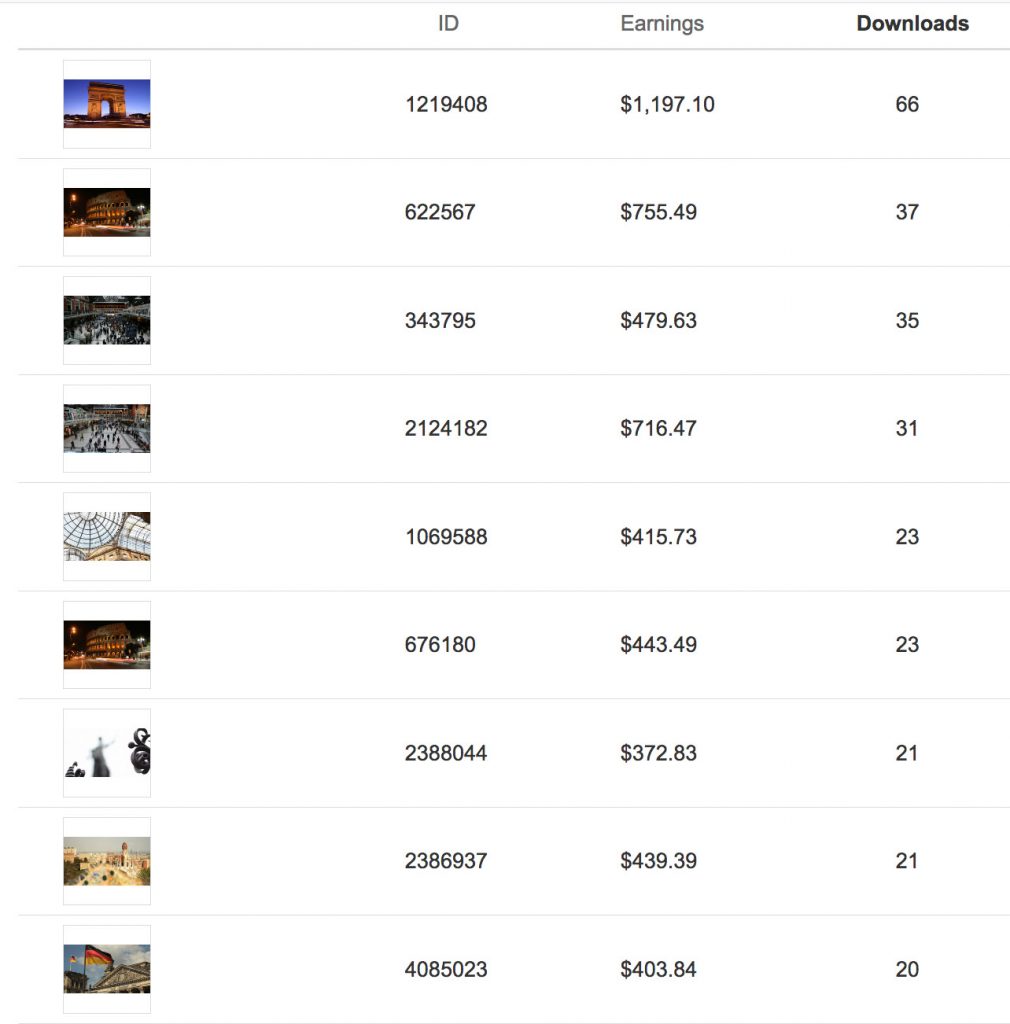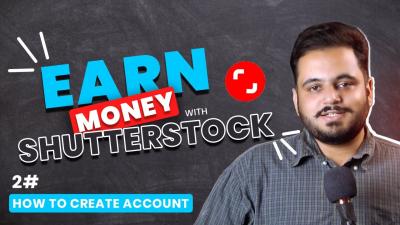If you’re thinking about becoming a contributor on Shutterstock, one of the first things you’ll want to understand is how you’ll earn money. Shutterstock is a popular platform for photographers, designers, and artists to sell their images, videos, and illustrations. But how exactly does the payment process work? In this post, we’ll break down the essentials so you know what to expect when it comes to earning per sale. Whether you’re just starting out or looking to optimize your earnings, understanding how
How Shutterstock Calculates Contributor Payments
Shutterstock‘s payment system is designed to be transparent and fair, but it can seem a bit complex at first glance. Essentially, your earnings per sale depend on several factors, including your contributor level, the type of content sold, and the buyer’s subscription plan.
Here’s a simple breakdown of how the calculation works:
- Base royalty rate: Shutterstock offers different royalty rates based on your contributor level (Standard, Enhanced, or Exclusive). Each level has a fixed percentage of the sale price.
- Content type: Photos, vectors, illustrations, videos, and music have slightly different royalty structures, with some content types earning higher rates.
- Buyer’s plan: Shutterstock has various subscription plans and on-demand purchases. Typically, sales made via subscriptions earn a lower royalty per download, but volume can compensate for this. Single purchase licenses tend to pay higher per-sale royalties.
Here’s a simplified example:
| Contributor Level | Royalty Rate for Photos | Royalty Rate for Videos |
|---|---|---|
| Standard | 15% | 20% |
| Enhanced | 30% | 30% |
| Exclusive | 30% | 30% |
For example, if you sell a photo for $10 and you’re at the Standard level, you’d earn approximately $1.50 for that sale (15%). If you’re an Enhanced contributor, you’d earn $3.00 (30%). Keep in mind, actual earnings can vary based on the specifics of each sale, but understanding these percentages helps you estimate your potential income.
It’s also important to note that Shutterstock releases payments on a monthly basis, provided you’ve reached the minimum payout threshold. The more you understand the calculation factors, the better you can strategize to maximize your earnings on the platform.
Factors Influencing Contributor Earnings Per Sale
When it comes to earning money on Shutterstock as a contributor, there are a bunch of factors that can influence how much you make per sale. It’s not just about uploading great images or videos; it’s also about understanding the nuances that can boost or limit your earnings. Let’s break down some of the key elements that play a role in determining your earnings per sale.
Quality and Relevance of Your Content
First and foremost, the quality of your work is critical. High-resolution, well-composed, and on-trend content tends to sell better and often at higher prices. Shutterstock‘s marketplace favors images that are relevant and in demand, so staying updated on current trends can give you an edge. For example, during holiday seasons or major events, content related to those themes often sees increased sales.
Contributor Level and Portfolio Size
Your contributor level and the size of your portfolio also matter. New contributors typically start with lower earnings per sale, but as you grow your portfolio and gain recognition, you might unlock higher earning tiers. Shutterstock rewards consistent quality and volume, so the more high-quality content you contribute, the better your chances of earning more per sale.
Content Type and Licensing
The type of content you upload influences your earnings too. Photos, vectors, illustrations, videos, and music all have different payout structures. Additionally, the licensing type—standard or enhanced—can impact your earnings. Standard licenses are more common and usually generate lower royalties, whereas enhanced licenses can lead to higher payouts for exclusive or premium content.
Customer Demand and Market Trends
Market trends play a big role in how much your content sells for. If your content aligns with what buyers are actively searching for, you’re more likely to make sales at higher prices. Keeping an eye on popular categories and trending topics can help you tailor your uploads to meet current demand.
Pricing and Shutterstock’s Royalty Structure
Finally, your earnings per sale are directly impacted by Shutterstock’s royalty structure, which varies depending on your contributor level and licensing options. As a contributor, you earn a percentage of the sale price, and this percentage can increase as you reach higher tiers or opt for exclusive content. Understanding this structure helps you strategize to maximize your earnings.
Average Payment Rates for Shutterstock Contributors
So, what can you expect to earn on average per sale? Well, Shutterstock’s payouts vary depending on your contributor level, content type, and whether your content is exclusive or non-exclusive. But to give you a general idea, here’s a quick overview of typical payment rates:
| Contributor Tier | Standard License Earnings | Enhanced License Earnings |
|---|---|---|
| Standard (Beginner) | Approximately 20-30% of the sale price | Higher, up to 30-40%, depending on the license |
| Advanced | Typically 30-35% | Up to 40% or more for exclusive content |
| Elite / Top Contributor | 35-40% | Up to 50% for exclusive content |
For example, if a standard license sells for $10, a beginner contributor might earn around $2 to $3 per sale. As you progress and unlock higher tiers, your earnings per sale can increase to $3.50 or more. Similarly, for an enhanced license, which might sell for $50 or higher, your payout can be significantly better.
It’s also worth noting that the actual payout can vary depending on the buyer’s licensing choice and whether you’re an exclusive contributor. Exclusive contributors often enjoy higher royalty percentages, which means more money per sale for the same content.
In summary, your earnings per sale on Shutterstock are influenced by your contributor level, content type, licensing options, and how well your content aligns with market demand. Understanding these factors can help you optimize your portfolio and increase your income over time.
Tips to Maximize Your Income as a Shutterstock Contributor
So, you’re eager to boost your earnings on Shutterstock? That’s a fantastic goal! While earning as a contributor can be rewarding, it often requires a strategic approach. Here are some practical tips to help you maximize your income per sale and grow your portfolio effectively.
Focus on Quality Over Quantity
It might be tempting to upload a large number of images quickly, but quality always wins. High-quality, professional-looking images tend to attract more buyers and command higher sales. Invest time in editing, ensuring your photos are sharp, well-composed, and properly lit. Use editing tools to enhance colors and clarity, making your images stand out in a crowded marketplace.
Research Market Trends
Stay updated on what buyers are searching for. Use Shutterstock’s trending search data or browse popular collections to identify themes and subjects that are in demand. Creating content aligned with current trends, such as remote work, sustainability, or specific holidays, can significantly increase your chances of making sales.
Diversify Your Portfolio
Don’t put all your eggs in one basket. Upload a variety of images covering different subjects, styles, and topics. This not only increases your chances of making sales across different categories but also helps you reach a broader audience. Remember, some buyers look for specific niches, so having a diverse portfolio is a smart move.
Optimize Your Keywords and Titles
Proper keywording is crucial. Use relevant, specific keywords that accurately describe your images. Think about what a buyer might search for when looking for content like yours. Avoid keyword stuffing but ensure your tags are comprehensive. Clear titles and detailed descriptions also improve discoverability.
Engage and Promote Your Work
Share your portfolio on social media platforms, personal websites, or blogs. Engaging with the creative community can lead to more exposure. Some contributors also participate in Shutterstock forums or groups, exchanging tips and gaining insights. Remember, the more eyes on your work, the higher the potential for sales.
Stay Consistent and Patient
Building a successful Shutterstock portfolio takes time. Upload consistently, listen to feedback, and refine your content based on what sells best. Patience and persistence are key – over time, your efforts will pay off with increased earnings per sale.
Conclusion and Final Thoughts on Shutterstock Contributor Payments
Understanding how Shutterstock pays its contributors is essential for turning your creative efforts into a sustainable income stream. Remember, your earnings per sale are influenced by your contributor level, the type of license purchased, and your overall portfolio quality. While initial earnings might seem modest, focusing on quality, market trends, and effective keywording can significantly enhance your revenue over time.
Keep in mind that success on Shutterstock isn’t just about making quick sales but building a reputable portfolio that attracts repeat buyers. With dedication, strategic uploads, and continuous learning, you can maximize your earnings and enjoy a fulfilling journey as a contributor.
Thanks for reading! Whether you’re just starting out or looking to refine your approach, stay motivated, keep creating, and watch your Shutterstock earnings grow.



